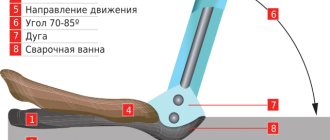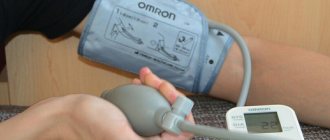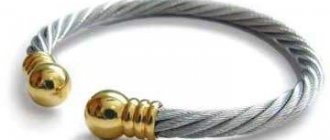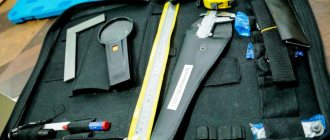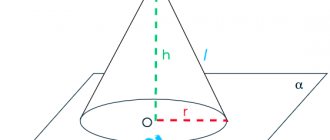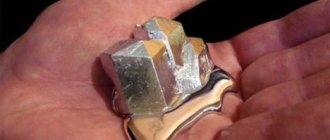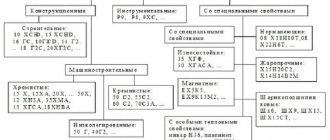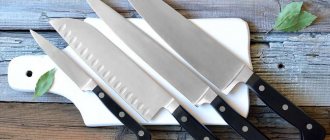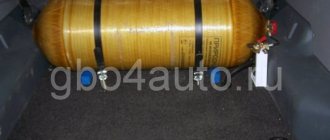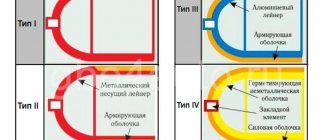A stable gas supply is ensured by the pressure in the propane cylinder. Such containers are used for cooking stoves, as automobile fuel, and even as an energy carrier for gas heating boilers, although the latter option requires some technical intervention in the nozzle system. Be that as it may, this type of liquefied fuel is extremely popular and is supplied in tanks with a capacity of 5, 12, 27 and 50 liters, although this does not mean that they are filled to capacity. Below we will look at what pressure in a gas cylinder is necessary for stable operation, tools for checking pressure, and rules for storing propane tanks.
How much gas is in the cylinder?
The level of its consumption will directly depend on how much gas the cylinder contains. The amount of gas depends on the pressure inside the container and the type of contents.
In the case of supplies from our company, the distribution is as follows:
- Propane. 50 liter cylinders hold 10 cubic meters. m / 42 liters of liquid gas / 21 kg of liquid gas
- Acetylene. In a 40-liter cylinder with an indicator of 19 kgf/cm2 you will find 4.5 cubic meters. m / 5.5 kg of gas in a dissolved state.
- Carbon dioxide. The 40 liter capacity contains 12 cubic meters. m / 24 kg.
For gases such as helium, oxygen, argon, nitrogen, as well as for welding mixtures, which are supplied in 40-liter cylinders at a pressure of 150 atmospheres, the figure will be 6 cubic meters. m / helium 1 kg, and for other compressed gases - 8–10 kg.
What is the volume of propane in a 50 liter cylinder?
Propane gas is used to ensure the operation of cooking stoves, heating residential, industrial and warehouse premises, refueling cars, gas welding and metal cutting.
In our country, steel propane cylinders with a capacity of 5, 12, 27 and 50 liters are most often used for domestic gas supply. Such containers are easy to distinguish from others - they are always painted red.
The word "PROPANE" must be written in white capital letters approximately 6 cm high.
In order to order a propane cylinder, you just need to call us or fill out the feedback form on the website. Our consultants will be happy to provide comprehensive information on any issue related to gas equipment. Our offers are transparent and profitable, just like propane gas itself.
Propane cylinder device
Structurally, they are containers made of carbon steel 3 mm thick. A stamped bottom with a stand-shoe is welded to a single-seam welded cylinder on one side, and a hemispherical neck for installing a valve on the other.
Various filling or dispensing equipment is connected to the latter. The majority of propane consuming devices (gas stoves, titaniums, welding torches, heating boilers) require reduced pressure.
To do this, a reducer is installed on the valve (the most common is BPO-5-5).
On the upper part of the neck there is a passport on which the main technical parameters of the device are stamped. These include: name of the manufacturing plant, quality control department stamp, individual number, month and year of manufacture, inspection date (updated every 5 years), volume, weight in empty and filled state.
Weight and size of cylinders of various capacities
How many kg of propane are in 1 5, 12, 27, 50 liter cylinder? You can find this out in the product quality certificate or in the table below. Here you can also find out how much a 5, 12, 27, 50 liter propane cylinder weighs.
Volume 5 liters 12 liters 27 liters 50 liters
| Empty cylinder weight, kg | 4 | 5,5 | 14,5 | 22,0 |
| Propane tank weight, kg | 6 | 11 | 25,9 | 43,2 |
| Mass of stored gas, kg | 2 | 5,5 | 11,4 | 21,2 |
| Cylinder height, mm | 290 | 500 | 600 | 930 |
| Cylinder diameter, mm | 200 | 230 | 299 | 299 |
What is the thread on a propane tank?
Valves of the VB-2 type are installed on most household cylinders for propane-butane mixture. These shut-off devices are manufactured in accordance with GOST 21804-94 and are designed for pressures up to 1.6 MPa. The tap has a left-hand thread SP21.8-1 (6 turns), which allows you to connect any gearboxes with a union nut and a similar thread.
The valve provides a strong connection to the neck, complete tightness, has clear markings and a modern design. Threaded surfaces are lubricated with a special lubricant that reduces friction during operation.
The screw plug with rubber gasket prevents gas leakage during transportation or storage. The device provides protection against unqualified repairs by persons who have not undergone appropriate training.
The reliability of the locking device contributes to long-term and safe operation of the gas cylinder structure.
Brushes for painting on ceramics
How many m3 of propane are in 1 5, 12, 27, 50 liter cylinder?
We have made special calculations that conditionally transform propane-butane into a gaseous state. Under standard conditions (100 kPa, 288 K), 0.526 m³ of propane or 0.392 m³ of butane is formed from 1 kg of liquefied gas.
Taking into account the percentage of the mixture (60% prop.), the volume of combustible gas is calculated using the formula M*(0.526*0.6+0.392*0.4). How many cubic meters are in a propane tank can be seen in the table below.
The last line shows the number of liters of propane-butane mixture (in the liquid phase).
Cylinder capacity (l) 5 12 27 50
| Capacity (cubic meters of flammable gas) | 0,95 | 2,59 | 5,38 | 10,01 |
| Liquid propane volume (liters) | 4,3 | 10,2 | 22,9 | 42,5 |
It should be borne in mind that the calorific value of the propane-butane mixture is three times higher than that of natural gas (methane).
Rules for the safe operation of propane cylinders
- When using and storing, do not allow the cylinders to overheat (for example, leave them in direct sunlight for a long time);
- It is not recommended to bleed out the propane-butane mixture until the tank is completely empty (under certain conditions it can suck in air, and this is dangerous);
- When transporting, be sure to use plugs and safety caps;
- in case of detection of dents or other defects, the product must be sent for an unscheduled recheck;
- Individuals are allowed to transport no more than five cylinders in one vehicle (they must be separated by spacers from each other).
- It is necessary to constantly monitor the condition of the cylinders, because it is not for nothing that they are considered fire and explosive objects.
How much do the cylinders weigh?
The weight of a fully filled cylinder is often an important parameter when transporting it. Weight distribution is shown in the table below.
| Gas type | Volume | Empty weight |
| Argon, welding mixture, oxygen, carbon dioxide, helium, nitrogen | 40 l | 70 kg |
| Acetylene | 40 l | 90 kg |
| Propane | 50 l | 22 kg |
Would you like a consultation?
Call us on the phone!
+7 Mon.-Fri. from 9:00 to 18:00, lunch from 13:00 to 14:00, Sat. from 9.00 to 15:00
Weight of an empty propane cylinder liters GOST – Theory of law
Made of high-alloy steel that can withstand external and internal loads without disturbing the original properties of the contents of the cylinder. It should be remembered that as the temperature increases, the pressure increases, so during storage and transportation, do not allow the temperature to rise sharply.
This is especially important in winter at low negative temperatures! Download the certificate Delivery in Moscow and Moscow Region Our store delivers using its own courier service, so orders are delivered on any day convenient for the buyer from Monday to Saturday between 13:00 and 18:00 or 18:00 and 22:00.
Free delivery within the Moscow Ring Road applies to some groups of products!
How much does a gas cylinder weigh?
The included accessories have a significant mass that must be taken into account. Average weight of the set: shoe - 5.2 kg metal cap - 1.8 kg ring - 0.3 kg The weight of a 40 liter oxygen cylinder is indicated in the table: Cylinder volume, litersWork.
Cylinder volume, litersWork. The weight of a gas cylinder is 50 liters without gas. The mass of gas in it is approximately the same as the cylinder itself weighs. That is, one liter of gas weighs a little less than half a kilogram.
There is a gas stove at the dacha, and every summer we have to replace the empty cylinder with a full one.
Important: A cylinder filled with gas weighs about 43 kilograms. This means that about kg of gas is filled into it. A liter gas cylinder contains a little more than 20 kilograms. If we assume that a propane-butane mixture is used for domestic needs and the content of How many kilograms of gas are in a liter cylinder?
Because there have been cases of explosions, even with fatalities, and now such refueling threatens serious trouble for the owners. They began to demand not only the presence of a plug, but even rubber rings around the body of the cylinder. Now to the essence of the issue.
Gas is filled into it. The total weight of the full cylinder is. I have these data: a kilogram cylinder contains approximately 20 kg of propane. Well, give or take the uneven filling. But a kilogram cylinder holds 11 kilograms of propane.
I thought about this question myself, because I myself want to buy a gas cylinder for my dacha and a gas stove to save on electricity. An empty 50 liter gas cylinder weighs about 22 kilograms.
The mass of the gas in nm is approximately the same as the weight of the cylinder itself.
The permissible mass of liquefied gas max is 5.3 kg 6.8 liters. The mass of the empty cylinder is 6.0 kg. The weight of a full cylinder is 11.3 kg. Propane cylinder 5 l with valve: Volume - 5 l.
The highest working gas pressure is 1.6 MPa. Dimensions - x mm. Wall thickness - 3 mm. The permissible mass of liquefied gas max is 2.2 kg. The weight of the empty cylinder is 3.1 kg. The weight of a full cylinder is 5.3 kg. Reply from 22 replies[guru] Hello!
Here is a selection of topics with answers to your question: How to determine by the weight of a cylinder with liquefied propane-butane how many atmospheres are left there? I have been working with gas since I was 15 years old, I started with my father, and now I have my own company. And please take into account that the density of the gas changes. How can you determine by the weight of a cylinder with liquefied propane-butane how many atmospheres are left there?
Important: the norms for filling cylinders by volume may differ at gas stations; the gas filling volume or weight must be clearly indicated by the gas seller when indicating the cost of filling a cylinder; in this case, the weight can be similarly recalculated according to the specified filling volume of a household gas cylinder. How many kilowatt hours are there in 1 kg of liquefied gas? The bulk of propane consuming devices - gas stoves, titaniums, welding torches, heating boilers - require reduced pressure.
To do this, the most common gearbox, BPO, is installed on the valve. A passport is placed on the upper part of the neck, on which the main technical parameters of the device are stamped.
These include: the name of the manufacturing plant, quality control mark, individual number, month and year of manufacture, inspection date updated every 5 years, volume, weight in empty and filled state. How many kg of propane are in 1 5, 12, 27, 50 liter cylinder? You can find this out in the product quality certificate or in the table below.
Here you can also find out how much a 5, 12, 27, 50 liter propane cylinder weighs. Volume 5 liters 12 liters 27 liters 50 liters Empty cylinder weight, kg Cylinders for technical gases.
Medical oxygen is used for medical purposes for breathing apparatus, oxygen cocktails, etc. Cylinders for technical gases manufactured in accordance with GOST can be designed for different types of gases.
They also differ in volume.
The cylinder must not have mechanical damage, traces of loose rust, or welding. All elements of the cylinder, the shoe and the neck, are attached to the shell using hot crimping.
The cylinder passport must be easy to read.
The service life of a cylinder produced since the beginning of the year, according to the order of Rostechnadzor, from the gas in the cylinder; Oxygen, argon, nitrogen, helium, welding mixtures: a liter cylinder at atm contains - 6 cubic meters.
Carbon dioxide: liter cylinder - 12 cubic meters. Important That is, one liter of gas weighs a little less than half a kilogram. A gas-filled cylinder weighs about 43 kilograms.
Source: https://teoriprava.ru/ves-pustogo-ballona-propana-litrov-gost.html
What thread is on the cylinders?
Cylinders also differ in such indicators as threads. In accordance with GOST 9909-81, the thread for the valves on the neck is indicated. Below you can find a table with thread values for various gas options.
| Type of cylinder and gas | Thread type |
| Up to 10 liters for any gas (including carbon dioxide fire extinguishers) | W19.2 |
| 40 l for helium, oxygen, argon, oxygen | W27.8 |
| 40 l for acetylene | W30.3 |
| Fire extinguishers | M18x1.5 |
Types of pneumatic cylinders
There are 2 types of pneumatic cartridges available for sale, by volume:
- 12 grams – enough to fire 55-60 shots;
- 88 grams – this pressure is enough for 400+ shots.
The first type is often used in air pistols, and the second in rifles. Locally produced cans are better suited to Russian pneumatics, while Western ones are better suited to imported ones.
The composition of carbon dioxide in the cans is different:
- gas only, 12 g;
- gas 12 gr. + 10%;
- CO2 with lubricant.
12 gram containers are standard. Samples of 7 and 8 grams are also sold. Grease cylinders are used when it is necessary to quickly lubricate the working parts of an air gun.
Weapon companies produce their own samples of carbon dioxide containers. Despite their versatility, it is recommended to use the appropriate brand for pneumatics: cylinders are designed for rubber seals and weapon model mechanisms.
Pressure of oxygen or argon in a fully charged cylinder depending on temperature
To properly use gas in cylinders, it is worth knowing the pressure of its various types, indicating the temperature. For greater clarity, we have presented such data in the form of a table below.
| Pressure | Temperature |
| 105 kgf/cm2 | -40 °C |
| 120 kgf/cm2 | -20 °C |
| 135 kgf/cm2 | 0 °C |
| 150 kgf/cm2 (nominal) | +20 °C |
| 165 kgf/cm2 | +40 °C |
Recommended reading:
- How to properly store gas cylinders?
- Features of the process and main requirements when transporting gas cylinders
Video description
Propane gas: measure the pressure in the cylinder.
What is important to know about refueling
The price of refilling a gas cylinder is determined as the product of the price of 1 liter of propane by the number of liters equal to 85% of the rated value of the cylinder volume Source mitex-shop.ru
The place where you will refill the propane cylinder is important, if only because not all refillers burden themselves such quality as conscience. As we said above, the tank is only 85% filled, but dishonest workers sometimes demand payment from the buyer for 100% of the capacity. For example, only 42.5 liters of gas are pumped into a 50-liter cylinder, but not 50, and this exactly corresponds to 85%. Therefore, do a simple calculation and find out if you are being deceived at the gas station. Keep in mind that only specialists should fill propane cylinders - this will ensure the quality of the filling and safety for you and everyone around you.
Helium pressure in a fully filled cylinder depending on temperature
When using it, you also need to have a good understanding of how helium pressure depends and how it relates to temperature. To understand this, see the table below.
| Pressure | Temperature |
| 160 kgf/cm2 | +40 °C |
| 150 kgf/cm2 (nominal) | +20 °C |
| 140 kgf/cm2 | 0 °C |
| 130 kgf/cm2 | -20 °C |
| 120 kgf/cm2 | -40 °C |
Acetylene pressure in a fully filled cylinder depending on temperature
We present a table with similar values, but this time for acetylene.
| Pressure | Temperature |
| 30.0 kgf/cm2 | +40 °C |
| 23.5 kgf/cm2 | +30 °C |
| 19.0 kgf/cm2 (nominal) | +20 °C |
| 14.0 kgf/cm2 | 0 °C |
| 13.4 kgf/cm2 | -5 °C |
How many atmospheres are there in reinforced cylinders?
The difference between reinforced CO2 cartridges and regular ones is their high shot power. The initial speed of the bullet will also increase, almost doubling.
Reinforced and conventional containers do not differ in weight or volume. The secret to increasing the power of shots is the use of a special composition - inert gas. The bullet is given more energy, its acceleration increases. The projectile is capable of penetrating a sheet of metal no more than 0.7 mm thick.
Differences between household cylinder propane reducers and industrial ones
Finally, buyers should clearly understand the differences between the two types of reducers - industrial and household propane cylinders. To help you quickly compare the central indicators, we have also compiled a visual table.
| Type | Bandwidth | Outlet pressure |
| Household gearboxes for gas stoves of the type RDSG-1-1.2 “Frog” and RDSG-2-1.2 “Baltika” | 1.2 m3/hour | 2000–3600 Pa (0.02–0.036 kgf/cm2) |
| Industrial gearboxes for gas-flame processing type BPO-5 | 5 m3/hour | 1–3 kgf/cm2 |
Safety precautions
Everything related to open fire is a source of increased danger for both humans and nature. A fire, burner, or heater require constant attention and careful handling. Nature is as fragile as it is powerful, and according to world statistics, 90% of forest fires are caused by humans.
This is especially true for gas appliances operated in or near a tent. It is necessary to ensure a flow of fresh air into the room: oxygen is consumed very quickly during work, and the danger of carbon monoxide poisoning is extremely high. Under no circumstances should flammable or explosive objects, such as fuel or aerosol cans, be placed near a working fire source. It is strictly forbidden to dry wet things over a burner or gas heater - once they dry out, they can easily catch fire. Failure to comply with safety precautions when handling fire can cause not only damage to equipment, but also the death of an unlucky tourist.
Tourist gas cylinder. What's inside?
Standard gas cylinders for burners use a mixture of butane, propane, and isobutane. The proportions in which they are “mixed” determine how well the burner will work, and, first of all, in the cold.
The vast majority of cylinders contain a mixture of propane/butane (isobutane) (either 30:70 or 20:80). Burns much more stable, incl. and at sub-zero temperatures, a cocktail in which instead of butane there is isobutane (or butane + isobutane), because in its chemical properties it is more homogeneous and has a higher octane number. Problems when using such a tourist gas cylinder begin at minus 15 degrees.
Coleman Propane Fuel Propane Tank
The higher the propane content, the more expensive the fuel for the burner. In special gas mixtures that are intended for use at low air temperatures, the so-called “winter gas” (the designation on the cylinders is the word “winter” or a snowflake), the propane content is 50% or higher. Manufacturers claim that they are suitable for use at air temperatures down to minus 25-30 degrees.
100% propane gas for Coleman Propane Fuel camping burners, which can be used at air temperatures down to minus 42 degrees (boiling point of propane). Cylinder volume 465 g. costs about 600 rubles. For this gas, a special, thick-walled cylinder is used, since propane requires more pressure to compress. Such a cylinder is intended only for use in propane burners and lamps of the same brand; its weight is much more noticeable than that of cartridges of the same volume filled with butane or gas mixtures.
100% isobutane/butane filler is found in tourist gas cylinders, in particular domestically produced ones such as “Eurogas” and “Tierra” (they are also called Kazan cylinders) and Korean “Pathfinder” and “Neogaz”. Without a doubt, they can be used on summer hikes, when the thermometer does not drop below plus 5-10 degrees, although manufacturers claim sub-zero temperatures.
Experienced tourists have a whole arsenal of little tricks that help gas burn in the cold. But, in our opinion, it’s easier not to be perverted, but to take either an oil burner or a multi-fuel burner on a winter hike. Gasoline burns vigorously even in severe Arctic frost.
